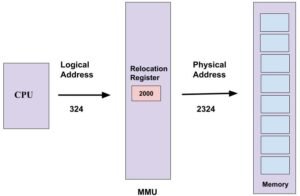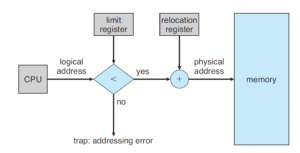Logical vs Physical Address
In modern computing systems, memory is managed in layers to provide flexibility, protection, and efficiency. One fundamental concept in memory management is the distinction between logical addresses and physical addresses. Understanding the difference between them is essential to grasp how programs access memory safely and efficiently.
What is a Logical Address?
A logical address, also known as a virtual address, is the address generated by the CPU during the execution of a program. This is the address that a program uses to access memory.
- It is used by the program’s instructions.
- It refers to a location in the program’s virtual memory.
- It is not the actual location in physical RAM.
Why it’s used:
Logical addresses allow programs to run as if they have access to an isolated memory space, even when multiple programs share the same physical memory.
What is a Physical Address?
A physical address is the actual location in the main memory (RAM) where data is stored.
- It is the real memory location in the system’s hardware.
- It can be accessed only after the logical address is translated by the Memory Management Unit (MMU).
- This is where the real data resides in RAM.
Role in execution:
When a program runs, the logical address it uses must be converted into a physical address so the CPU can retrieve or store data in actual memory.
Address Translation Process
The translation from logical to physical address is handled by a hardware component called the Memory Management Unit (MMU). Here’s how it works:
- The CPU generates a logical address.
- The MMU takes this address and translates it using a technique such as paging or segmentation.
- The resulting address is the physical address in RAM.
- Data is accessed using this physical address.
This mechanism provides memory protection, process isolation, and enables virtual memory features.
Key Differences
| Feature | Logical Address | Physical Address |
|---|---|---|
| Generated by | CPU during program execution | MMU after translation |
| Visible to | User and programs | Operating System and hardware |
| Location | In virtual/imaginary memory space | In actual physical memory (RAM) |
| Flexibility | Allows processes to run in isolation | Depends on available hardware memory |
| Security | Offers process-level protection | No direct access by user programs |

